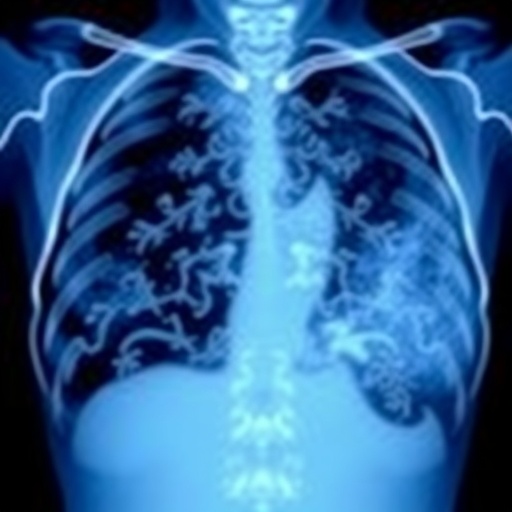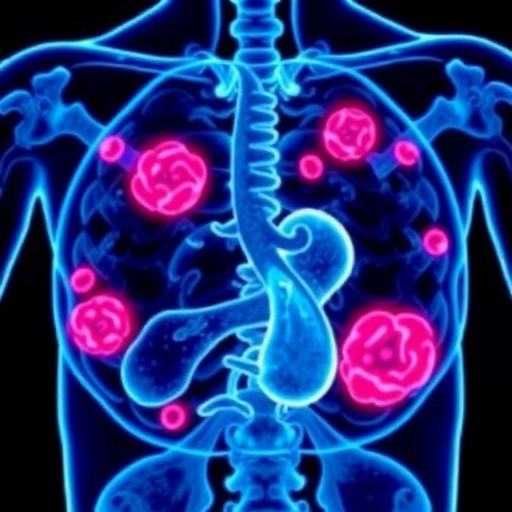
In a groundbreaking advance poised to reshape breast cancer screening protocols, Dutch researchers have unveiled a hybrid reading strategy that harnesses the predictive prowess of artificial intelligence (AI) in tandem with the discerning eye of radiologists. Detailed in the esteemed journal Radiology, this innovative approach applies AI to interpret mammograms only when its confidence surpasses a critical threshold, while deferring ambiguous cases to human experts. Tested in a retrospective analysis involving more than 40,000 screening exams, the model achieved a remarkable 38% reduction in radiologist workload without sacrificing the accuracy of cancer detection or recall rates.
The crux of this hybrid strategy lies in the integration of AI’s probability of malignancy (PoM) outputs with a quantifiable measure of uncertainty. Traditional AI systems, despite exhibiting impressive diagnostic capabilities, often struggle with overconfidence in their predictions, which can undermine their clinical reliability. Addressing this challenge, the Dutch team incorporated an uncertainty metric based on entropy calculations of the AI’s predicted malignancy probabilities for regions deemed suspicious on mammograms. This dual-output mechanism ensures that AI flags only those cases for autonomous reading where prediction confidence is high, thus adding a vital layer of safety and interpretive nuance.
The dataset anchoring this research is notably comprehensive, encompassing 41,469 screening mammograms acquired from 15,522 women between 2003 and 2018 as part of the Dutch National Breast Cancer Screening Program. With a median patient age of 59 years, the collection includes 332 screen-detected cancers and 34 interval cancers. The data was stratified into two equal cohorts: one to calibrate the AI thresholds defining the hybrid model, and the other to rigorously evaluate its performance. This careful division allowed the researchers to optimize the balance between sensitivity and specificity, a delicate equilibrium essential in cancer screening.
.adsslot_9KEWnbkYv2{width:728px !important;height:90px !important;}
@media(max-width:1199px){ .adsslot_9KEWnbkYv2{width:468px !important;height:60px !important;}
}
@media(max-width:767px){ .adsslot_9KEWnbkYv2{width:320px !important;height:50px !important;}
}
ADVERTISEMENT
Through methodical analysis, the team determined that the entropy of the mean PoM score in the most suspicious mammographic region was the most effective uncertainty metric. This measure produced detection and recall rates closely paralleling those achieved via the conventional double-reading approach, where two radiologists independently interpret each screen. In practice, the AI system evaluates mammograms, producing a malignancy probability alongside an uncertainty score. When the malignancy probability falls beneath a set level and the AI expresses high confidence, the case is categorized as normal, thereby obviating the need for human review. Conversely, predictions with high malignancy probabilities and low uncertainty trigger recalls for further investigation, while the indeterminate cases are forwarded to radiologists for double reading.
One of the most striking findings emerged from the distribution of AI decision confidence: despite the fact that most AI predictions were uncertain, roughly 38% of cases were deemed sufficiently confident to be read solely by the AI. This selective delegation of cases translated to a workload reduction for radiologists to 61.9% of current levels, all while maintaining consistent recall rates (23.6 per 1,000 cases compared to 23.9 per 1,000 cases) and cancer detection rates (6.6 per 1,000 cases compared to 6.7 per 1,000). Such results underscore the model’s potential to preserve clinical standards while streamlining the labor-intensive screening process.
Importantly, the model’s diagnostic accuracy improved markedly when AI made confident judgments. The area under the receiver operating characteristic curve (AUC) reached 0.96 in confident AI reads, a significant elevation from the 0.87 recorded when AI decisions were uncertain. Sensitivity figures nearly paralleled the established double-reading paradigm, with 85.4% sensitivity for the confident AI reads versus 88.9% from dual radiologist interpretations. These performance metrics suggest that AI, armed with uncertainty quantification, can not only share but occasionally rival human diagnostic acumen in breast cancer screening.
The study also illuminated demographic factors influencing AI uncertainty. Younger women and those with dense breast tissue were more frequently classified as uncertain by the AI, reflecting known challenges in mammographic interpretation related to breast density and age-related tissue characteristics. This variability in uncertainty underscores the necessity of hybrid models that incorporate human oversight for complex or ambiguous cases, thus preserving patient safety and diagnostic integrity.
Sarah D. Verboom, M.Sc., lead author and doctoral candidate at Radboud University Medical Center, emphasized that the hallmark of their approach is less about workload redistribution and more about incorporating AI uncertainty as a trust-enhancing parameter. She advocates for commercial AI platforms to integrate such uncertainty quantification, believing it to be a pivotal component for clinical acceptance and ethical deployment. This paradigm shift, where AI transparency complements diagnostic precision, could accelerate AI integration in clinical practice.
The implications of these findings extend beyond radiologist workload. By allowing AI to autonomously evaluate a substantial subset of women’s mammograms, potentially up to 19% in this model, the clinical workflow can be expedited without compromising quality. This could alleviate workforce shortages and reduce the tedious burden of routine case reading, freeing radiologists to focus on challenging cases and interventional procedures. Moreover, the hybrid system may bridge the gap between patient acceptance and technological advancement, as surveys indicate most women prefer at least one radiologist’s review in their screening process.
False positives—a perennial concern in cancer screening—were not worsened by the hybrid model. Recall rates remained stable, reinforcing the AI’s cautious approach when uncertain. In fact, the AI’s ability to flag uncertainty may prevent premature recalls and unnecessary biopsies, enhancing the overall patient experience. The combination of improved confidence calibration and human oversight offers a safeguard against the pitfalls of AI overreach.
Future directions highlighted by the research team include prospective trials to validate the hybrid strategy in real-world settings and to quantify actual reductions in reading time and cost savings. Additionally, there is interest in refining uncertainty metrics and integrating continuous quality control mechanisms to monitor AI performance post-deployment. Such efforts are critical for regulatory approval and clinical adoption, ensuring that AI tools complement, rather than complicate, radiological workflows.
This study is a component of the broader aiREAD project, supported by prestigious bodies including the Dutch Research Council, the Dutch Cancer Society, and Health Holland. Its multidisciplinary approach marries cutting-edge computer science with clinical medicine, epitomizing the collaborative spirit essential for medical AI innovation. As AI continues to evolve, strategies that balance autonomy with clinician engagement are likely to define its successful application in cancer screening.
In conclusion, this hybrid AI-human reading strategy represents a sophisticated advancement that leverages AI’s computational strengths while respecting the complexity and nuance inherent in breast cancer diagnosis. By explicitly accounting for AI uncertainty, it paves the way for more reliable, efficient, and patient-centered screening programs. As technology continues to mature, such thoughtful integration of AI promises to revolutionize disease detection and management, ultimately improving outcomes and optimizing healthcare resources.
Subject of Research: People
Article Title: AI Should Read Mammograms Only When Confident: A Hybrid Breast Cancer Screening Reading Strategy
News Publication Date: 19-Aug-2025
Web References: https://pubs.rsna.org/journal/radiology, https://www.rsna.org/
Image Credits: Radiological Society of North America (RSNA)
Keywords: Artificial intelligence, Mammography, Breast cancer
Tags: advancements in medical technologyAI and radiologist collaborationbreast cancer screening innovationscancer detection reliabilityhybrid AI approach in mammographyintegration of AI in radiologymachine learning in medical imagingmammogram interpretation accuracypredictive artificial intelligence in healthcarereducing radiologist workload with AIretrospective analysis of screening examsuncertainty metrics in AI diagnostics






